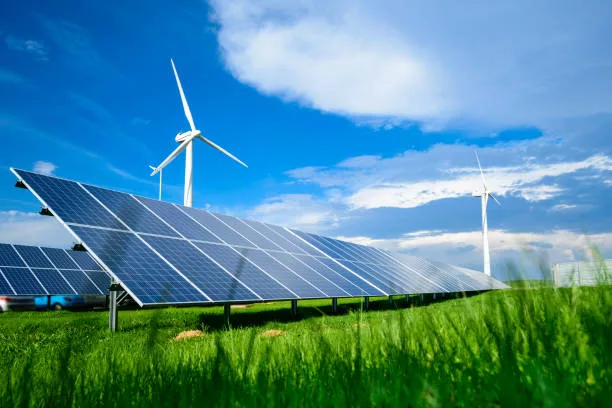The global landscape of economic growth is being redefined by the burgeoning sphere of clean technology manufacturing. Key sectors such as solar, wind, batteries, electrolyzers, and heat pumps are witnessing unprecedented growth rates, shaping a greener, sustainable future.
Investment Surge in Solar and Battery Production
Gone are the days when the clean energy sector was merely an environmental aspiration. The IEA‘s groundbreaking “Advancing Clean Technology Manufacturing” report highlights a staggering increase of 70% in investments for the year 2023, totaling a whopping $200 billion. These numbers are not just statistics; they represent a significant 4% of global GDP growth and an impressive near 10% of the increase in global investments.
Solar and Wind Take the Investment Spotlight
The solar industry, in particular, is basking in the glow of success with an investment doubling from the previous year. The growth trajectory for battery manufacturing is equally electrifying, with a 60% rise in investment. With the surge in investments, current solar PV module manufacturing capacities align seamlessly with the IEA’s ambitious net-zero emissions scenario for 2030. Battery cell manufacturing is already gearing up, with 90% capacity readiness in anticipation of the end-of-decade net-zero demands, considering planned projects.
Upcoming Projects Ready to Energize 2024
An exciting future lies ahead as clean energy manufacturing accelerates, with approximately 40% of 2023’s investments feeding into projects set to be commissioned in 2024. The battery sector exhibits an even more dynamic pace, with 70% of its investments dedicated to next-year deliverables.
China’s Dominance in Clean Energy Manufacturing
The dominance of China in this green revolution remains unequivocal. The nation boasts more than an 80% share in global solar PV module manufacturing. Although the United States and India have made strides, accounting for a 5% share each, and Europe trails with a mere 1%, China’s grip on the market appears steadfast for the approaching decade.
Battery Cell Manufacturing: A Geographic Shift on the Horizon
Amid this Chinese stronghold, the battery cell manufacturing landscape may disperse more evenly by 2030. Prospects for a more geographically diverse production base are bright, with Europe and the United States potentially capturing about 15% each of the global installed capacity, provided all projected ventures crystallize.
Cost-Effectiveness in Manufacturing: Can Policy Make a Difference?
Plant-level assessments indicate a striking contrast in production costs, where China outcompetes with significantly lower expenses for constructing clean energy technology facilities. Compared to China, constructing similar facilities in the US and Europe could cost up to 70-130% more. Notably, operational costs—which include energy, labor, and material expenses—comprise a hefty 70-98% slice of total production costs, suggesting that strategic policymaking could effectively narrow the current cost disparities.
The Path Forward for Policymakers
Fatih Birol, the IEA’s Executive Director, posits that the data presents an immense opportunity for policymakers to integrate clean energy transitions into their nations’ industrial strategies. Recognizing the need for more targeted investments in some technologies and potential for wider global distribution, the direction is unequivocally clear.
The motivation behind the production of this report is the directive from G7 Leaders in 2023, aiming to equip policymakers with the insights necessary to craft industrial strategies that prioritize clean energy manufacturing, thereby fostering a balanced and sustainable industrial future.
